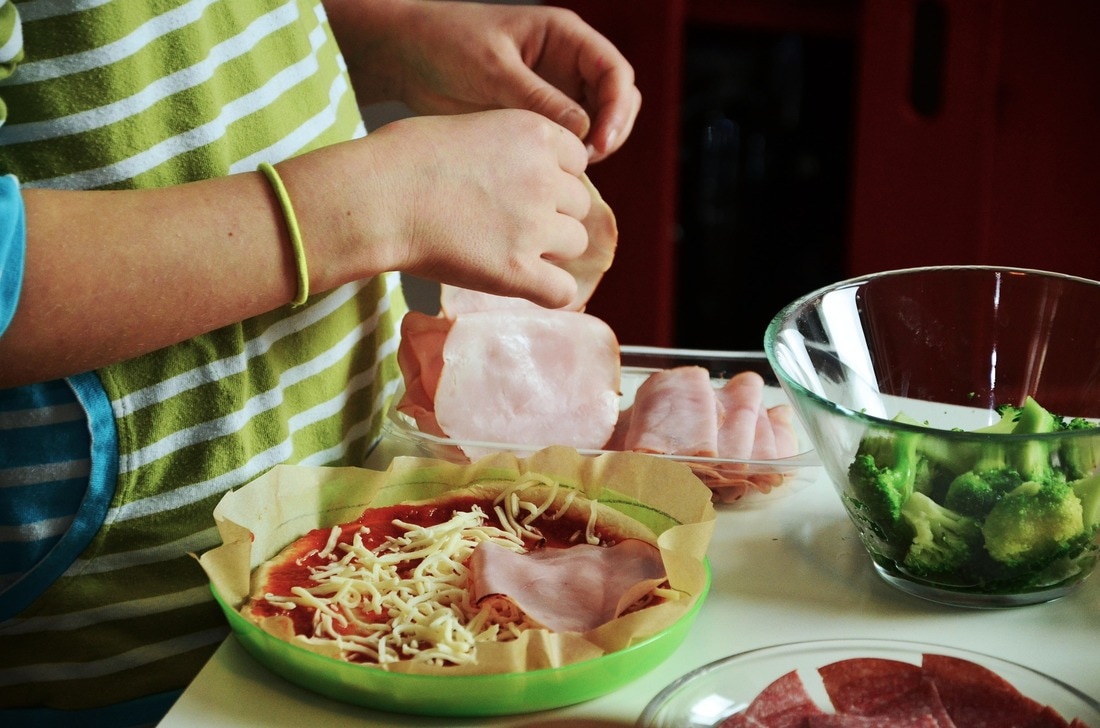|
Kids need help to grow up healthy and strong. Explore the 4 areas of health you can improve on to help your kids be healthy. Raising a healthy child is every parent’s priority but it isn’t always as easy as we’d like it to be. We’re constantly fighting an uphill battle against junk food and lack of exercise and sometimes people worry that the aren’t doing right by their children. It isn’t a lost cause and you can still make sure that they grow up to be healthy and strong, you’ll just have to work a bit harder at it. Here are the most important things to remember when you are trying to keep the kids healthy. Cooking Making sure that they eat right is one the main things to worry about. After a busy day at work, it can be tempting to just shove a frozen meal in the oven and let it do all the hard work for you. While this might be easier, those ready meals are going to be packed full of all sorts of junk and they won’t have much nutritional value at all. Cooking proper meals with fresh ingredients might take a bit more time but your children’s health is worth the effort. One way of taking the pressure off a bit and teaching them good eating habits is to get the kids to help you with the cooking; it should inspire them to carry on eating properly in later life. Supplements Your kids should be getting most of the vitamins and minerals that they need from their food if you’re doing it right but sometimes it’s best to top them up with supplements as well. Calcium is one of the most important nutrients for children as a deficiency could stunt their growth quite seriously. AlgaeCal plant calcium is a brilliant, naturally sourced supplement that can make sure they grow big and tall. You need to be careful when giving your children supplements because they can gain weight if they have too much nutrition in their diet, you wouldn’t think it but it’s true. Before you start giving them any supplements it’s best to get the advice of your doctor to make sure that it’s safe. Exercise
In the past it wasn’t difficult getting kids to exercise, they were always outside playing anyway. These days it’s a different story. Children spend so much time inside on the computer and not much time being active. Everybody should get an average of half an hour exercise every day but the reality is that most of us don’t. Make an effort to get the kids outside for a little while every day and playing with them yourself helps you get a bit of much-needed exercise as well. Mental Health When we think about health we focus too much on the physical. Your children's happiness is just as important and if they are unhappy, it could have a knock-on effect on their physical health. Children’s mental health issues are being discussed more often than they used to be which is good but there is still a long way to go. The main thing to remember is to be vigilant and watch out for any changes in their behavior. It is normal for their moods to fluctuate, especially during their teenage years, but any major changes should be a cause for concern.
0 Comments
As we grow up many of us let go of our playful side in a rush to be adults. Read on to learn how you can connect with your inner child again. My son has a new toy this week. It’s a mini grocery cart that he has wanted for ages. I saw it in the thrift store so I decided to buy it for him. Yesterday he came into my office pushing it full to the brim with fake veggies and fruits, and at the top sat his favorite stuffed tiger and bunny toys. I asked him if he was having fun with his new toy and commented on his stuffed animals. “Yup. I’m taking them for a walk” he said. “They are getting some fresh air!” and with that he rolled off again into the other room. Watching him just made me smile and think about how easy it is for children to connect with fun and playfulness. How creative and inventive they can be, and how for the most part, it is so easy to make them happy. It also made me think about how quickly we can lose that part of ourselves. How for most of us growing up, also meant letting go of that joy. It was not until I had my son that I realized how much of that joy I had let go of, and how so many of us have a need to connect with that part of ourselves again. I can hear the collective groan! Yes I am talking about that “find your inner child” stuff that people talk about, but don’t worry. There is a fine line to finding your inner child though, and it’s about still being an adult and keeping up with all of the responsibilities of your life, AND embracing that fun, playful and imaginative side of yourself. So where to start? For my clients who are unsure and hesitant to begin, I always suggest a very easy route which is to purchase a box of crayons and a colouring book. They are readily available at any dollar store in a wide range of themes. In the privacy and safety of your own home, take the time to colour at least one page. Don’t worry about the “rules” that say the sky must be blue or the grass green etc. Just play and be creative. If you go outside the lines it’s okay. In fact, do it deliberately just to see how it feels: be brave! Each week pick up something new to try such as modeling dough, stickers, toy cars, blowing bubbles or whatever else you desire. I bet that pretty soon you will be looking forward to your new “toy” and what you get to play with that week! Break the cycle of passing limiting beliefs onto your child or children. Continue reading to learn how you can do it. Some people call it a bubble or a box; I often call it a wall. I have written about the walls we build around ourselves, but what about the walls we try to build around our children? Generally speaking most parents love their children and only want the best for them, but sometimes in wanting the best for them, they inadvertently start building a wall around them.
What is the foundation of this wall? It’s made up of all of a parents past hurts, pains and mistakes, and anything and everything that either hurt, scared, or damaged them in some way. They so desperately don’t want their child or children to experience any of that so they try to block them in. While it is done with the best intentions, it is often a subconscious effort, something they do without thinking. Teach Yourself To Be Aware My son is now almost 4 years old. An energetic, full of life, happy boy whom I affectionately call “Monkey Boy” for his love of daredevil moves and climbing everything and anything in sight! I love him beyond words, and every day since he has taken his first tentative steps I have had to work hard to avoid putting a wall around him. I like to think that I am doing a good job of letting him be himself, but some days, I am sure I am not succeeding so well. No one is perfect; everyone is a work in progress. The most important thing to remember is that you acknowledge the negative thoughts or behaviour as in comes up in you and you make a conscious effort to modify it or eliminate it so that you don’t pass it on unnecessarily to your child or children. I feel the need to add to this topic the statement: please use common sense. Obviously, protecting your child or children from any truly dangerous situation/s is essential, so in that case, DO listen to you instincts and the voice you have inside that is screaming at you to intervene. In that case, it is warranted. A Real Life Example This is an example of breaking the cycle from my own life. It is about taking my son to the park. I remember with a smile my sons first tentative forays at the park, his little feet stumbling with awkward steps, while I gripped him strongly to help him walk. I would have to hoist him up to the slide, holding him as he slid down. This past year he was able to climb the playground structures with ease. Brave as he always is, he decided that he was ready for the side of the park meant for children ages 5 and up, and I agreed. At first, I stood right near him, ready to catch him if he fell, all the while holding my breath, while smiling and telling him he could do it! Every part of me screamed to not let him do it, but I knew that wasn’t coming from me really. That was a bit of wall from my own family, my own restrictive childhood, which was plagued with constant words of caution from my own mother about how I could not possibly manage to do the things I wanted to do. So armed with that knowledge, and mustering all the resolve I could, I stood by and let him climb on his own. Gosh that was hard! Did he fall or slip? Yes he did, but I was there to grab him and encourage him to try again, and he did so fearlessly. Now he is “Monkey Boy” because his foundation doesn’t have that fear of climbing tall structures or tackling high slides. I did not pass a limiting belief onto him. Now every chance I get where I can reinforce a positive belief to him regarding climbing, or heights or just taking a chance, I do. Leave Your Wall Behind It’s easier to build a wall than to tear one down, but that is one of our responsibilities as parents. We have to make an effort to not pass along our own negative limiting beliefs to our children. They don’t need our walls; they don’t need our flawed foundations. They need love, support, and positive guidance to build their own secure foundation. Not to build a wall, but to build a strong support, a stabilizing base for their life, so that no matter what happens to them, they know they have a foundation that will support them. Whatever stage you are at with your wall, whether it’s in pieces around you, or whether it is still tall and strong, don’t extend it to your child or children. You can’t control every aspect of their life, nor should you want to. They are not you; they are not your partner. They are their own unique individual. You don’t have to change them, or squish them to fit behind your wall. Talk with them, really listen to them, and love them completely for the wonderful person they are. |








 RSS Feed
RSS Feed
